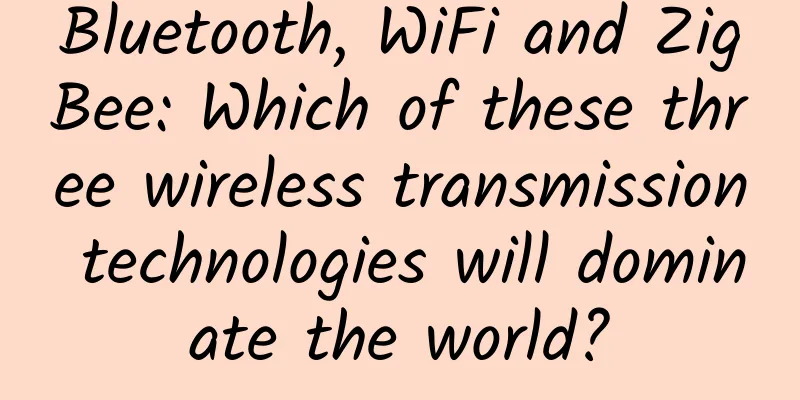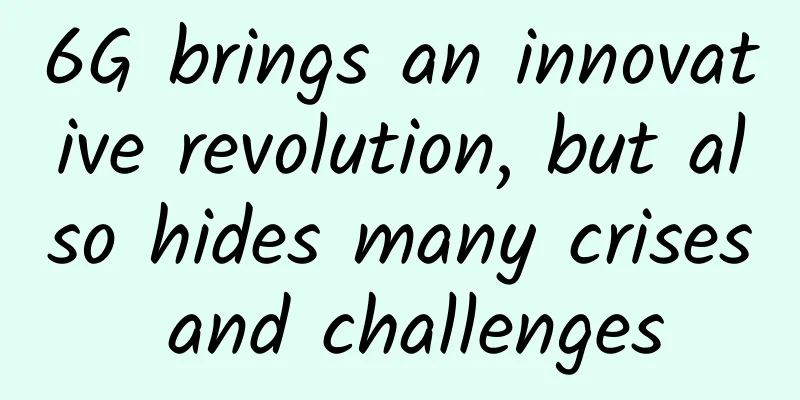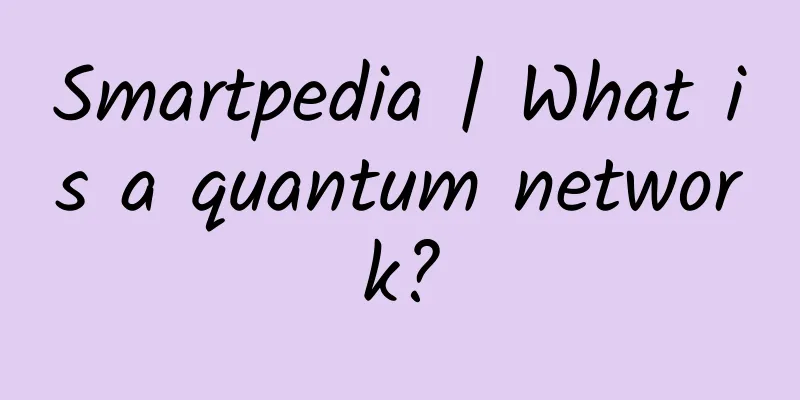Bluetooth, WiFi and ZigBee: Which of these three wireless transmission technologies will dominate the world?

|
There are more and more smart products, and the technologies used in smart homes are becoming more and more mature. However, there has been no unification in wireless communication protocols. Judging from the current situation, this wish cannot be realized in the short term. In this case, why don't we find another way and choose the one with the greatest advantages and the highest popularity among these standards and reuse it? In the current IoT applications, there are many wireless transmission technologies, but when we count them, the three with the widest application range and the greatest potential are nothing more than Bluetooth, Wifi and ZigBee. So which of these three wireless transmission technologies can dominate the world? Wifi Through WiFi connection, mobile phones and smart devices can be remotely controlled via WiFi. No matter where in the world you are, as long as there is 3G/4G or WiFi network, you can control home appliances, sockets, light bulbs and other smart products. The Wi-Fi industry has long been committed to making Wi-Fi technology the preferred wireless transmission option in the field of IoT. In general, WiFi will play an important role in the final success of IoT. However, a recurring criticism of WiFi connection of IoT devices is the increase in power consumption and resource usage. But at the same time, Wi-Fi can establish a secure connection between devices on smartphones, allowing users to share pictures. Technically, the main advantages of WIFI are reflected in transmission speed and transmission distance. Its maximum transmission distance can reach 300m and its maximum transmission speed can reach 300Mbps. Its weakness is reflected in power consumption. Its maximum power consumption is 50mA. Another issue that everyone is generally concerned about is security. The encryption method of WiFi is SSID. Since it is a relatively open structure, users need to pay special attention to the password of the home gateway. If the products in the smart home are connected by Wi-Fi, it would be a bit scary if they were hacked one day. Bluetooth Although Bluetooth is not widely used in mobile phones and computers and is almost forgotten, its role cannot be ignored. From version 1.0 to the latest version 4.2, its functions are becoming more and more powerful. In version 4.2, Bluetooth has greatly enhanced the application characteristics of the Internet of Things, and can realize many new features such as IP connection and gateway settings. The Bluetooth SIG recently announced that smart home has become the fastest growing area of Bluetooth. In recent years, the compound annual growth rate of Bluetooth in the smart home field has exceeded 232%. The Bluetooth SIG also listed the smart home market as the main direction for 2015. Due to the limitation of technical specifications, Bluetooth also faces the problem of signal being easily blocked by walls in smart home applications. The Bluetooth Technology Alliance has established a smart Mesh research group. Since October last year, several companies have used Mesh technology to connect and network Bluetooth. After multiple Bluetooth devices are networked, the problem of weak Bluetooth signals will be significantly improved. I believe that in 2016, Bluetooth will become more mainstream than Wi-Fi, with faster transmission speeds and wider network coverage, which can bring faster data transmission. Compared with WIFI, the advantages of Bluetooth are mainly reflected in power consumption and security. Compared with the maximum power consumption of WIFI of 50mA, the maximum power consumption of Bluetooth of 20mA is much smaller, but its disadvantages in transmission speed and distance are also obvious. Its maximum transmission speed and maximum transmission distance are 1Mbps and 100m respectively. Zigbee ZigBee, also known as the Purple Bee Protocol, is named after the bee's figure-eight dance. It is a short-range, low-power wireless communication protocol based on IEEE802.15.4. The ZigBee protocol has touched the nerves of the global Internet of Things industry and has a profound impact on the development of smart homes. There is no doubt about this. The market-leading wireless standard ZigBee has been unified into ZigBee3.0, and it has been announced that the ZigBee application layer protocol will be implemented on the Thread network architecture. Zigbee's predecessor can be traced back to Bluetooth. Both have the advantage of low-power transmission, but the latter is relatively complex, with fewer network nodes, and is not suitable for multi-point control. When the number of smart products exceeds a certain level, they cannot be interconnected in the same local area network. Bluetooth transmission is also relatively slow, taking an average of about 10 seconds; Bluetooth coverage is limited to 10 meters, so only devices in a small range of the living room or bedroom can be interconnected. Recently, Xiaomi's Lumi launched a home smart set that uses Zigbee technology. ZigBee is a communication protocol for smart home control systems that has become popular in recent years. Its performance can be summarized into the following aspects: 1. The data rate is relatively low. In the 2.4GHz frequency band, the data rate is only 250Kb/s. Excluding the consumption of channel competition response and retransmission, the rate that can be actually used by the application may be less than 100Kb/s. Therefore, it is not suitable for video and other things. 2. In terms of reliability. The physical layer uses spread spectrum technology, which can resist interference to a certain extent, and the MAC application layer (APS part) has a response retransmission function. When the ZigBee network is interfered by the outside world and cannot work normally, the entire network can dynamically switch to another working channel. 3. Energy consumption characteristics Energy consumption characteristics are a technical advantage of ZigBee. Usually, the application data rate carried by ZigBee nodes is relatively low. When communication is not needed, the node can enter a very low-power sleep state, and the energy consumption may be only one thousandth of the normal working state. Because in general, the sleep time accounts for most of the total operating time, and sometimes the normal working time is less than one percent, a high energy saving effect is achieved. 4. Networking characteristics: ZigBee's large-scale networking capabilities - 65,000 nodes per network, while each Bluetooth network has only 8 nodes, can provide strong support for a wide range of applications. In short, the three wireless transmission technologies, Bluetooth, Wifi and ZigBee, play their strengths in different applications of the Internet of Things based on their respective technical advantages. The competition between the three is undoubted. As for who will dominate the future, or whether a fourth technology will emerge, it is up to anyone to decide, right? Then, what we need to do is to take advantage of their strengths and meet the needs of our own design. |
<<: Transitioning from IPv4 to IPv6, you can't miss these knowledge points
Recommend
Learn about IP addresses in one minute. The Internet is not a lawless place. Please be careful in what you say and do.
You must have seen descriptions of IP addresses o...
AWS launches 5G service, officially enters the mobile network market
Amazon Web Services (AWS) has launched the AWS Pr...
China has 1.011 billion Internet users. After 27 years of Internet development, it has become a place for wealth creation.
27 years ago, anyone who mentioned the word "...
ColoCrossing US VPS 50% off/Bare Metal Cloud 35% off, $1.97/month-1GB/25G SSD/20TB@1Gbps
ColoCrossing Easter promotion has started, with 5...
Domestic IPv6 system deployment speeds up and IPv6 application boom is coming
The current Internet Protocol address IPv4 addres...
10 ways to improve Wi-Fi signal when surfing the Internet
[[265727]] Slower browsing speeds, no streaming, ...
Analysis of Python's new string format vulnerability
Preface This article conducts an in-depth analysi...
Huawei launches new smart security brand Huawei HoloSens, leading the smart security market
Dongguan, China, August 8, 2019 - At the "In...
Are you a left-brained or right-brained person? (Test included)
【51CTO.com Quick Translation】 The success of a co...
What will 5G replace?
[[411646]] What will 5G replace? 5G's lightni...
The four major equipment manufacturers compete for 5G. Who will have the last laugh?
In 2019, the dispute over 5G never stopped. Wheth...
Germany approves Huawei 5G, says it will remain open to competing technologies
After successively losing important markets such ...
"Flooding" or rational construction? Operators should deploy 5G in a rhythmic manner
Nowadays, 5G has become a hot topic around the wo...
Physical layer security technology for industrial wireless networks
1. Industrial wireless network development and se...









